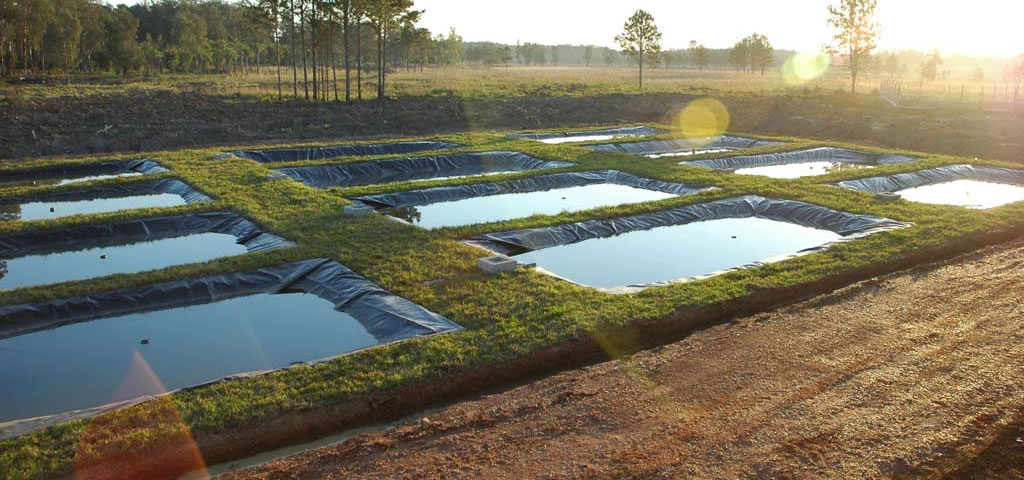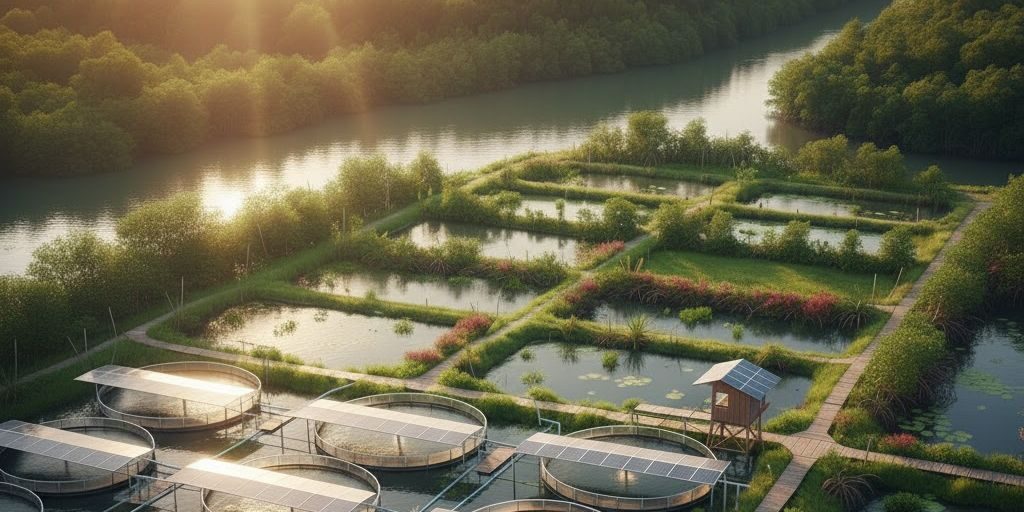- Software Gestor para Aquicultura
- (85) 2139-6730
- contato@despesca.com.br
Sustainable aquaculture practices.

Feed management to optimize growth and reduce waste.
07/08/2025
The importance of data management for decision making
11/08/2025Sustainable Aquaculture: The Path to a Stronger, More Profitable Farm
Between us producers, the word “sustainability” can often sound like another bureaucratic demand or an extra cost. But the truth is that sustainable aquaculture practices are, in reality, the foundation for a more efficient, resilient, and, ultimately, more profitable business. The modern producer doesn’t adopt these practices just to protect the environment but because they understand that a business that doesn’t care about the future has no future.
Let’s talk about how we can apply sustainability in the daily life of our production, whether in shrimp farming or fish farming, turning challenges into opportunities.
1. Smart Water Management: Our Most Precious Resource
Water is the heart of our production. Therefore, conscious management is the basis of everything. Reducing water exchange in the ponds, adopting recirculation systems (RAS) when possible, and, especially, maintaining a rigorous control of water quality parameters are essential steps. Constant monitoring of pH, dissolved oxygen, ammonia, and nitrite is what allows us to prevent problems and use water efficiently. A system like Despesca becomes an indispensable tool here, recording and analyzing this data to optimize management and minimize waste.
2. Effluents: From Problem to Solution
Treating the water that leaves our ponds before returning it to the environment is a sustainable practice that demonstrates our responsibility. Technologies like settling ponds or even the adoption of biofloc systems not only reduce environmental impact but can also reuse nutrients for production. It’s a virtuous cycle where what would be waste turns into a new opportunity.
3. Feed and Nutrition: Precision for the Wallet and the Planet
Feed is one of the biggest costs of production. Sustainable shrimp farm management directly involves using high-quality feed from suppliers who also care about the origin of their inputs, and, above all, precise feeding. We know that excess feed not only pollutes the water but is also money thrown away. Rigorous monitoring of consumption and adjusting feeding rates based on the animals’ weight and growth are practices that benefit the environment and our bottom line. With the help of a management system, we can record the amount of feed applied and the performance of our batch, ensuring maximum efficiency.
4. Biosecurity and Health: A Healthy Environment is a Sustainable Environment
A farm that frequently faces disease outbreaks is not sustainable. Therefore, investing in shrimp farm biosecurity is a fundamental practice. This involves choosing quality post-larvae and fry, controlling the entry of visitors and equipment, and maintaining a sanitarily safe environment. A healthy animal population grows better, demands fewer resources, and ensures a successful production cycle.

5. Energy Efficiency: Savings and Less Impact
The energy we use for pumps, aerators, and other equipment impacts both our operational costs and the carbon footprint of our production. The search for more efficient equipment and, where feasible, the adoption of renewable energy sources, such as solar panels, are trends that are already transforming the sector, resulting in long-term savings and a greener business.
6. Certifications: Proof of Quality and Sustainability
Adhering to recognized market certifications (such as BAP or ASC) is the most solid way to prove to consumers and buyers that our farm follows the best sustainable shrimp farming practices. These certifications open the doors to premium markets and increase the value of our product, justifying a higher price and ensuring a better return on our effort.
In summary, sustainable aquaculture is a set of practices that, when well-applied, make our production more efficient, safer, and more profitable. It is our way of guaranteeing not only today’s prosperity but the viability of our business for many, many generations. It’s the kind of smart management that every serious producer should seek.




